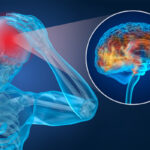By: Ryan Roessler
At Chicago Mind Solutions we try to keep abreast of the latest developments not only in the science of neurofeedback, but in the conditions it treats. One of these is ADHD, a condition that is usually diagnosed between the ages of six and thirteen and effects patients their entire lives. Depending on the severity of the symptoms however, patients may not be aware they have it until well into adulthood. Often parents discover their own ADHD only after its been identified in their child.
We recently read an article in USA Today, “The New Face of ADHD.” that noted an increase of ADHD among young women.1 According to this article, the number of young adult women diagnosed with ADHD has jumped 344 percent over the last decade.
the last decade.
In exploring further, we discovered this statistic seemed to be borne out by other articles including one written by Dr. David Rabiner, Director of Undergraduate Studies in the Department of Psychology and Neuroscience, Duke University. 2 It was published by SharpBrains, an independent market research firm that tracks health and performance applications of brain science. In this piece, Rabiner summarizes the findings of several studies done since 1995 that reveal information about the diagnosis and treatment of ADHD among different demographics culled from a representative sample of physician’s offices across the country. These studies show the following.:
• Between 1995 and 2008 the number of adults diagnosed with ADHD during an office visit increased by over 400% – that is from 3.1 per 1000 visits to 14.5 per 1000 visits. The study also noted that the percentage of office visits that included the prescription of medication following a diagnosis of adult ADHD increased from 1.9 to 11.4 per 1000 visits.
• ADHD also increased among the teenage population starting in 1991 thru 2009. During this period, four times as many boys were diagnosed with this disorder – from 39.5 to 144.6 per 1000. Even more surprising, six times as many girls were diagnosed – from 12.3 to 68.5 per 1000 visits. The rate of medication for these children increased at similar rates.
A more recent study seems to support these reported increases.
A study published in the Journal of Attention Disorders in 2017 seems to verify the findings above. This survey covered three time periods – 2008 to 2009; 2010 to 2011 and 2012 to 2013 – and, again, was based on data from a nationally representative sample of US-community based physician offices. It also included demographic information such as age, gender, race etc.
The rate of increased diagnosis varied by gender and age
 In the past, ADHD has generally been seen more frequently in males than females. This study suggests that it is still more prevalent among males than females with men experiencing a 52% increase in diagnosis compared to a 23% increase for women. However, this pattern did not hold true for patients in their teens, with 22% more teen girls being diagnosed than before compared to an increase of only 17% among teen boys.
In the past, ADHD has generally been seen more frequently in males than females. This study suggests that it is still more prevalent among males than females with men experiencing a 52% increase in diagnosis compared to a 23% increase for women. However, this pattern did not hold true for patients in their teens, with 22% more teen girls being diagnosed than before compared to an increase of only 17% among teen boys.
The use of prescribed medication rose at different rates as well.
While female adults were prescribed medication for ADHD 13% more than previously, prescriptions for teenage girls rose 29%. On the other hand, 30% more men were prescribed ADHD medication compared to an increase of only 10% for teenage boys.
Significant differences in diagnosis were also noted at opposite ends of the age spectrum.
For those 65 and older, a diagnosis of ADHD has been and continues to be relatively low. Yet the study indicated that this group has experienced the biggest change in diagnosis of any other demographic over the last few years – a 348% increase! This could simply be because recognition of ADHD has grown and the condition remained undiagnosed among older populations until now. Or perhaps other factors are involved and have yet to be discovered.
Among children, five years old and younger, there has been a decrease in diagnosis with visits dropping 25% and medication treatment dropping 51%. This may be because recent AAP guidelines have highlighted complications in establishing a proper diagnosis in young children and recommended that behavioral therapy be tried before prescribing medication.
Although these studies reveal an increase in cases, they don’t indicate why these changes have taken place.
Rabiner suggests two possible answers that may account for this trend. First, he postulates that new therapies and medications are being introduced at a significantly faster rate than before. This increase in treatment options may be encouraging physicians to diagnose and prescribe more frequently for this condition than they did earlier.
 The other possible reason for this change is that the fifth edition of the Diagnostic and Statistical Manual of Mental Disorders (DSM-V) was updated. The diagnosis criteria of ADHD for children between 6 and 12 has been increased from the presence of six symptoms to 12 on the one hand. While the symptoms required for a teenager or adult to be described as suffering from ADHD has been reduced from six to five.
The other possible reason for this change is that the fifth edition of the Diagnostic and Statistical Manual of Mental Disorders (DSM-V) was updated. The diagnosis criteria of ADHD for children between 6 and 12 has been increased from the presence of six symptoms to 12 on the one hand. While the symptoms required for a teenager or adult to be described as suffering from ADHD has been reduced from six to five.
Another factor may be that recent developments in EEGs and other diagnostic tools are enabling doctors to identify ADHD more accurately than before. Although Rabiner suggests that all too often best diagnosing practices aren’t being followed as closely by physicians as they should be. He closes his article with the following cautionary note, “This concern coupled with findings that the rates of ADHD diagnosis vary significantly in different parts of the country and are substantially lower in other developed countries, raise important questions about the need to better understand why diagnosis and medication treatment of ADHD has continued to rise at a fairly rapid rate.”
We’re going to cover these findings and their implications in upcoming blogs.
One of the subjects we’d like to explore in the future is the part that socially-imposed roles may play in diagnosis of young women. In the past, girls diagnosed with ADHD were often seen as underachieving dreamers. Perhaps families and educators were less pro-active in seeking treatment for them than for boys with ADHD because their behavior wasn’t as disruptive. But during the last few years, the behavior and expectations of women and girls have become more aggressive and pro-active. These changes may be affecting the diagnosis and treatment of ADHD.
Another subject worth considering is the effect that medications for ADHD may or may not have on fertility or/and pregnancy. If more and more young women are taking them, they could have a significant impact on their health and that of the children they may have.
In addition, about ten years ago a young Olympian with ADHD became a household word – Michael Phelps. His success lead to an interesting debate as to whether ADHD is a “disability” or a “gift.” We’d like to write more on this as well.
We hope you’ve found this article enlightening and will join us again soon for a further exploration of how ADHD manifests itself in our lives today. We look forward to revealing more about how changing attitudes toward ADHD and other brain conditions are affecting their treatment.
- Weintraub, Karen, The Rise of ADHD Among Women, USA Today, (Jan. 31.2018), https://www.pressreader.com/usa/chicago-sun-times/20180131/282733407303984
- Rabiner, D., Study: Rates of ADHD diagnosis and medication treatment continue to increase substantially. SharpBrains, (Mar. 22, 2017), https://sharpbrains.com/blog/2017/03/22/study-rates-of-adhd-diagnosis-and-medication-treatment-continue-to-increase-substantially/






